Snare Removal Saves Cats Lives.
Wild big cats are losing their lives to a silent killer. A plain wire snare made of barbed wire, tension cables or even bicycle brake wire, can cost less than one dollar to assemble, but they are silently killing big cats and other wildlife. The victims of snares are quite often tigers, lions and leopards but it is not only the big cats that are being caught in the dreadful snares. Zebra, antelope, gazelle and all wildlife fall prey to the wire snares that are so widespread throughout Africa and Asia that entire wild populations have been wiped out, leaving humans and cats with nothing to eat.
Last summer I spent some time with the African Conservation Center Game Scouts near Amboseli National Park in the Rift Valley Province of Kenya. Here the ecosystem is mainly savannah grassland that spreads across the Kenya-Tanzania border.
After reading about the ACC Scouts and trying to imagine what a typical day must be like for them, the experience of walking along side them felt surreal. Yet there I was boots on the ground ready to search. After a brief introduction and a reminder to remain vigilant in the open bush we began to survey the area.
Searching for snares with the African Conservation Center Scouts
We didn’t need to walk far before observing the tracks of giraffe, zebra, ostrich and a serval. We walked past an abandoned wart hog hole and witnessed signs that elephants had recently passed through the area. Our guide was lighthearted and jovial listening as we did our best to match the animal with their tracks. I couldn’t help but wonder how the Scouts were able to find traces of poacher activity in this vast area, when to my untrained eye it felt exactly like the proverbial needle in the haystack search.
About an hour into our walk, our Scout’s demeanor changed drastically. He told us to stand quietly while he jumped up onto a nearby termite mound to survey the surroundings.
After a few moments he descended the mound and gathered us close to tell us that we were now in a very dangerous situation. He was almost certain, poachers had recently been in this area. A misplaced broken tree limb caught his eye. Poachers use tree limbs to block a path and act as a corral to lead the animal into the snares. He said it was entirely possible they could be watching us from afar so not to wander far from him.
With laser precision our Scout led us to more broken branches, and found tiny pieces of blue fabric tied to the twigs left like a “bread crumb” trail for the poacher’s return. We were warned to not walk between any trees, and to look closely for wire intertwined with the branches. The only sound we could hear was the warning call of the ring necked dove as we disturbed her with our presence. Palpable tension took over looking in silence for the deadly wire snares.
Then with a raised hand warning us to stop, we saw the wire snare set and ready to capture an unsuspecting animal. Scouts were called to dismantle the snare, while we continued to search the area for additional traps. And sure enough within a few yards, another snare was located between two trees.
An untrained eye could easily walk right past the wire snares that are nearly invisible even from short range. The poachers are equipped with GPS units to help them locate and return to active snares they placed in the expansive open savannah between Kenya and Tanzania. The ACC Scouts also track poacher activity on their GPS units trying to keep tabs on active locations. The Scouts used to be able to track the footprints of the poachers until the poachers began to wear the same shoes as the Kenya Wildlife Service and the ACC Scouts. Now the Scouts keep exacting records of the time and location of their searches so that a misplaced footprint can be identified.
The Scouts must rely on their finely honed observation skills to track down poacher activity and dismantle snares before an animal is caught. Animals caught in a poacher’s snare may die quickly but often the snared animal dies a long and painful death from infection or starvation.
Both of the snares we found on our search were dismantled. I couldn’t help but think how overwhelming the search for snares must be for the ACC Scouts. Such a big problem over such a big space. But they are determined to save lives by dismantling one snare at a time.
The Scouts were kind enough to take a photo of me holding one of the snares we found that day.
True Wildlife Heroes
It was an honor to walk with the African Conservation Center Scouts and to see up close the work that they do every day to help all animals. They are true wildlife heroes.
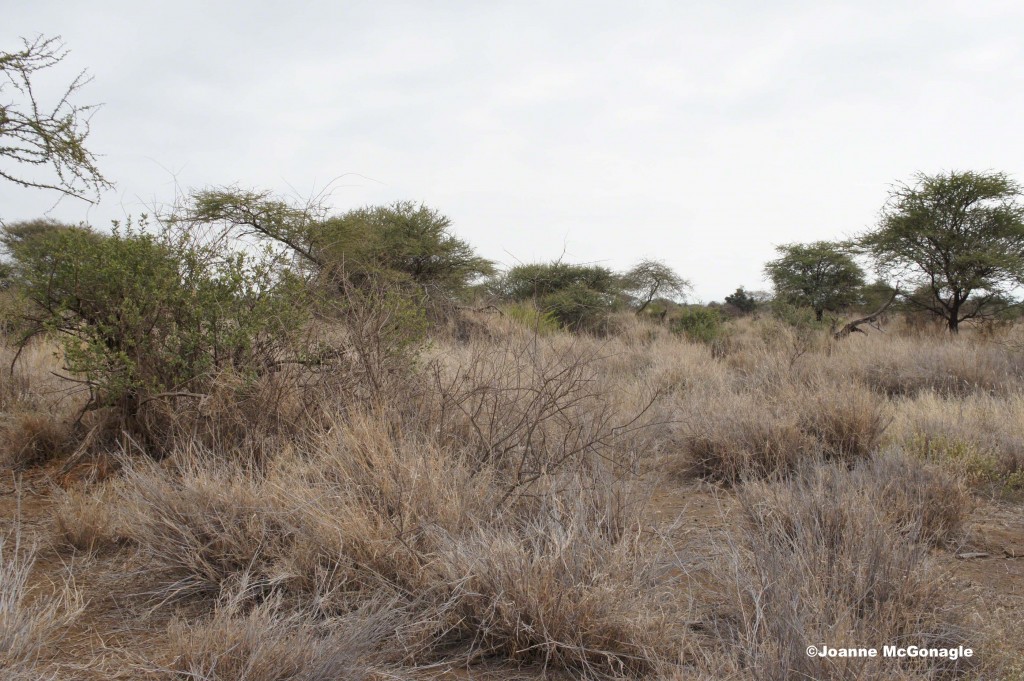
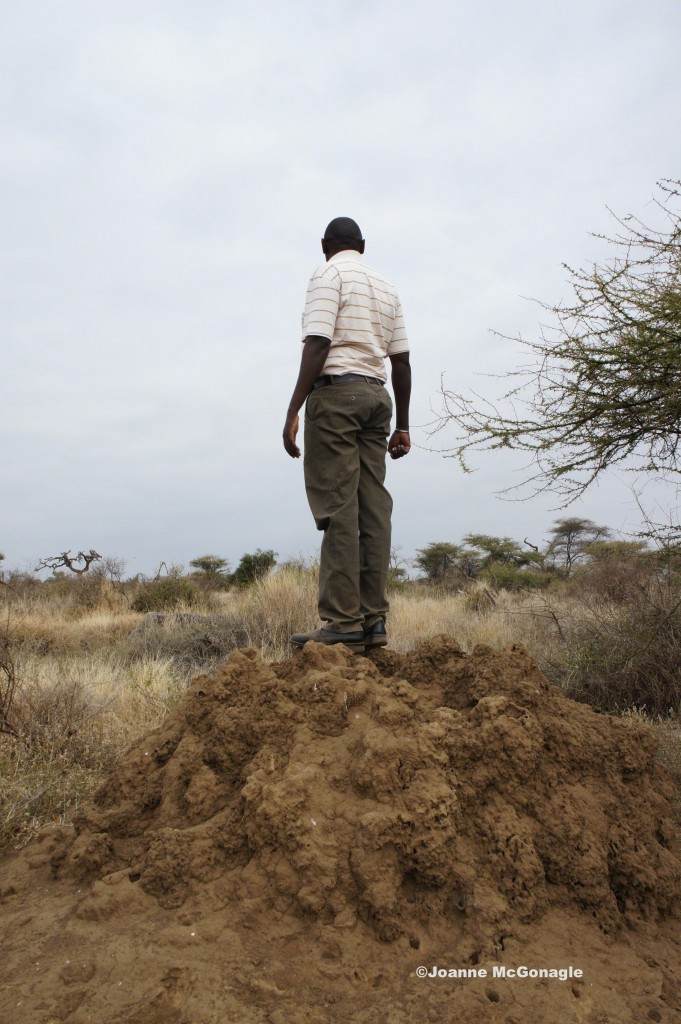
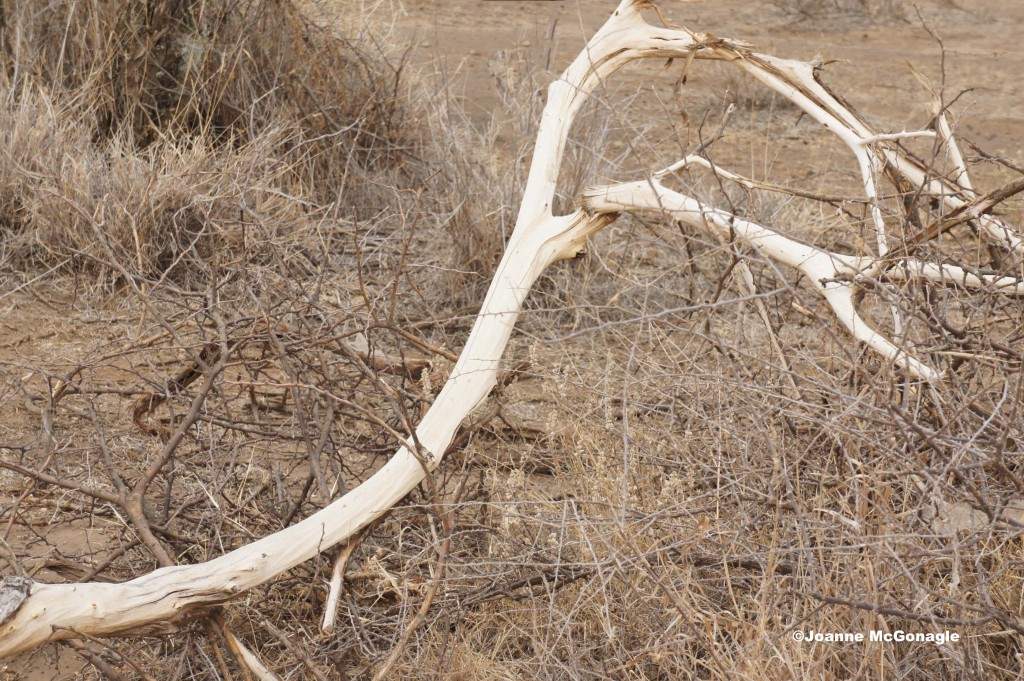
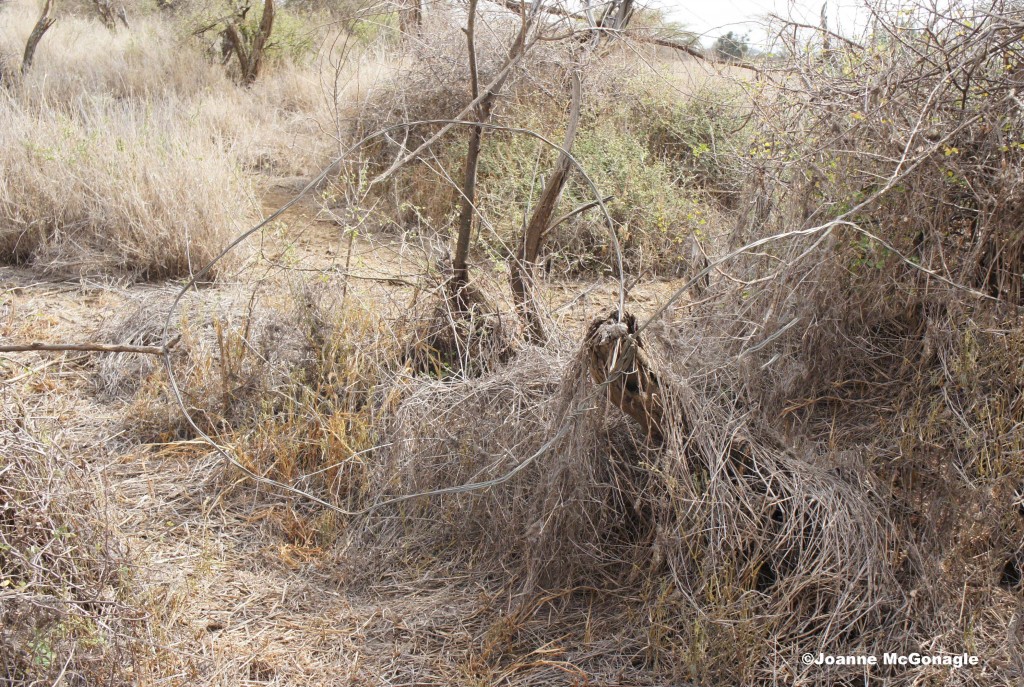
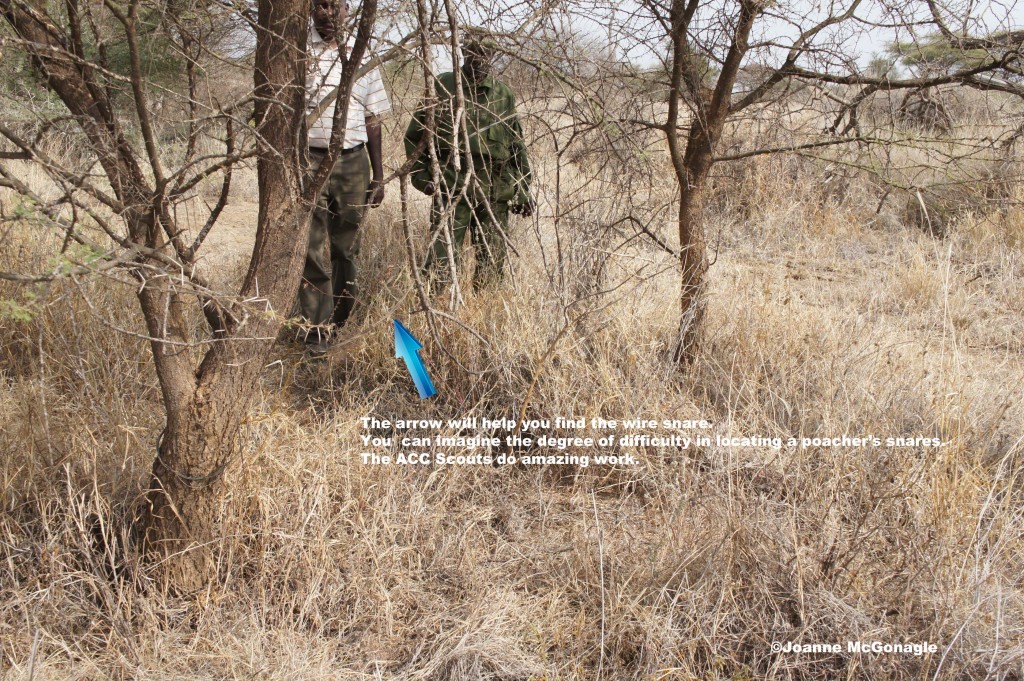
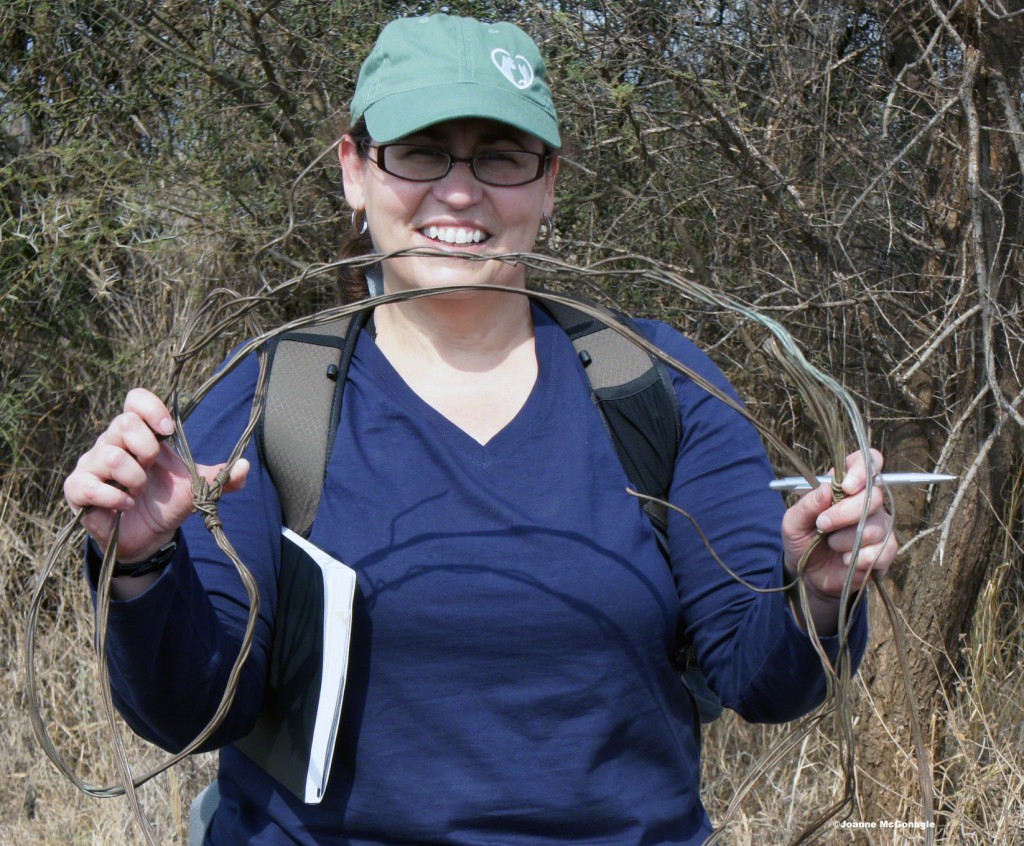
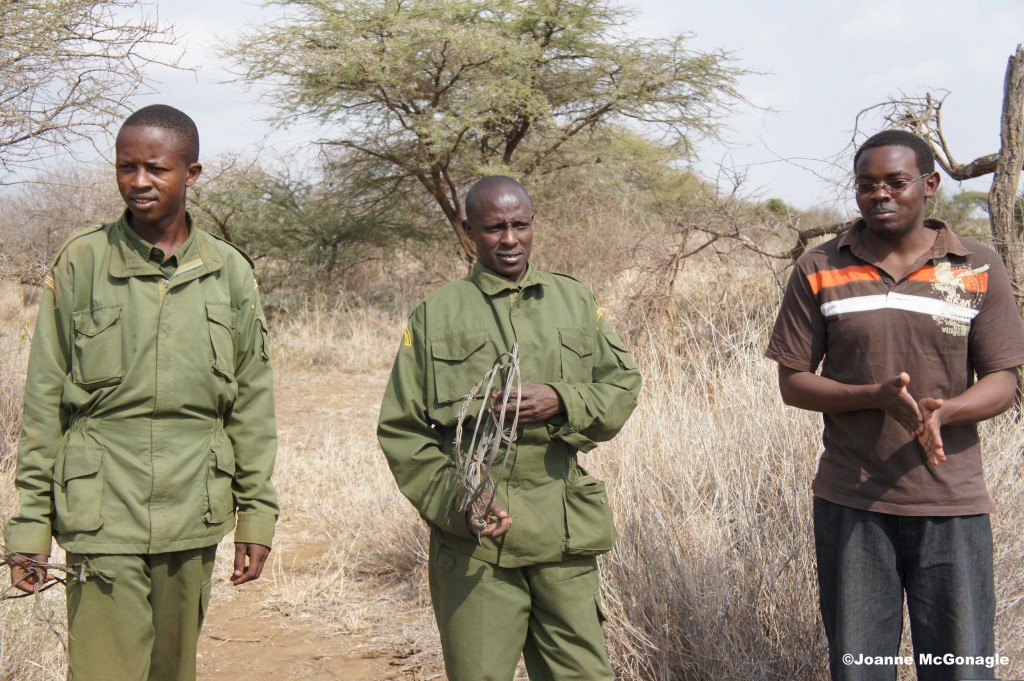
Wow, this really taught me and my Mom a lot Gracey, we had no idea poachers used snares like these. Mewz Mommy is pawsome to travel to Africa to help these scouts save all of our big cousins from the greedy murderers. These people are true animal heros, they deserve oodles of good Karma! Thank mew for sharing another fascinating and informative story Gracey, I loves mew! Mewmew! =^•.•^=
Why is it that man must always destroy something? Rhetorical question, but one that I ask almost every day when I read the news. And this information made me mad and sad but hopeful at the same time. How can these people cover the miles to protect the animals, every day? And to do it in tough conditions… well, they are really, truly wildlife heroes. I would stand with them any day.
Thank you for this article, Joanne and Gracey.
Sharon
Your posts keep on getting better and better, which amazes me because they are so good to begin with. I didn’t know how difficult it is to see the snares. Great job.
Great post. What a keen sense of awareness these scouts must have to spot these snares. This is probably a ridiculous question, but what is the primary purpose for poaching these animals…for food or trophy? So sad.
Hi Malia, most of the snares are set for the illegal bush meat trade. Elephants are sought after for their tusks. Yes it is sad, and no it is not a ridiculous question. The problems are complex/ Thank you for reading.
What a wonderful article! Thank you for sharing it and all of the beautiful photos. You are right, The Scouts are *True wildlife heroes*. It must have been a real pleasure to meet them and share time with them doing this great work.
The Scouts are amazing people. In what seems like overwhelming odds, they remain positive and unafraid. Great role models. Thank you for reading.
Wow, Gracey, thank your mom for sharing her experience! That was quite a story! I almost felt like I was walking with them! I didn’t know they were killing so much of the wildlife there, by using this method…makes me sad…Thanks again!
Snares are so inexpensive to make that there is not a financial barrier for the poachers. And as you get a glimpse of the vast territory of open savannah, you can see there is plenty of opportunity for the poachers to set the traps. It is very sad. Thank you for reading.